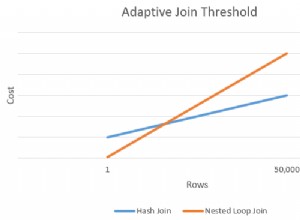Zaznacz to, że używałem Postgresql, mając kolumny "id", "comma_sep_string" z nazwą tabeli "string_comma", gdy jest liczba, pokaże ten rekord, a jeśli liczba wynosi zero, nie pokaże tego konkretnego rekordu i zobaczy zrzut ekranu dla wyjścia danego zapytania
select temp1.id, temp1.comma_sep_string, sum(count) from
(select temp.id, temp.comma_sep_string, temp.years, count(*) as count
from
(SELECT
ID, comma_sep_string,
regexp_split_to_table(comma_sep_string, E',') AS years
FROM string_comma) as temp
where temp.years::int > 1980
group by temp.id, temp.years, temp.comma_sep_string) as temp1
group by temp1.id, temp1.comma_sep_string





